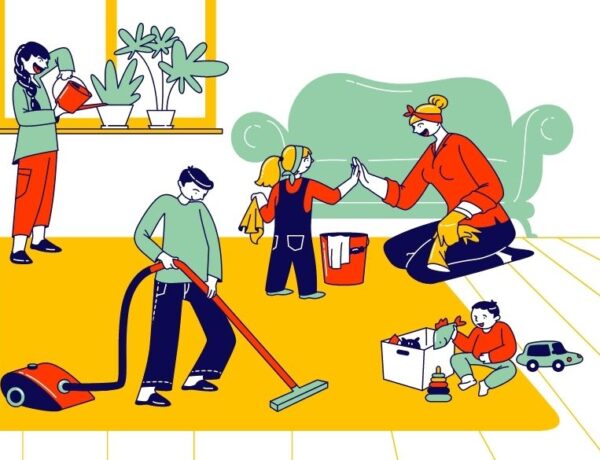For many gardeners, the end of the gardening season is bittersweet. It’s hard to say goodbye to all your carefully-tended plant friends. On the other hand, there is plenty of good about this seasonal transition. In Kodiak, it means vibrant colors, the start of northern lights viewing, and silver salmon fishing.
One more thing… Autumn is the best time to reap the season’s most abundant crop: Leaves.
The longer you garden, the greater your appreciation for the value of organic matter. And one of the very best sources of such goodness is autumn leaves.
[perfectpullquote align=”full” bordertop=”false” cite=”” link=”” color=”” class=”” size=””]Pound for pound, the leaves of most trees contain twice as many minerals as manure.[/perfectpullquote]
That’s because leaves are packed with trace minerals that trees draw up from deep in the soil. It’s a wonderful cycle of life.
When added to your garden, leaves:
- Feed beneficial microbes and earthworms
- Fluff up heavy soils and help sandy soils retain moisture
- Are a fabulous source of carbohydrates (brown) and active microbes for inoculating your compost pile.
[Hi, it’s Marion here. This article was originally published in the Kodiak Daily Mirror, the hometown newspaper for Kodiak, Alaska. Go here to access the archive page for the list of my past columns, written each week since 1986].
Ah, but compost isn’t the only way to utilize leaves…
My friend in the UK says, “No gardener is worth her salt if she doesn’t have a bin filled with leaves for making into leaf mold.”
In Britain, leaf mold is the connoisseur’s choice for mulching around perennials. It’s easy to see why this cocoa brown, sweet-smelling, moisture-retentive mulch is so popular. In the U.S. however, few gardeners even know what it is. That’s probably because the only way to get leaf mold is to make it yourself.
Leaf mold is simply partially decomposed leaves that are somewhere between shredded leaves and humus. If you wonder what it looks like, next time you’re in the woods, just kneel down at the base of a cottonwood or alder tree and push away a small area of dry leaves. Underneath, you’ll reveal a layer of leaf mold — a crumbly brown material with a pleasant, earthy scent.
TRUE OR FALSE? Leaves are considered acidic
ANSWER: True. Most leaves are slightly acidic when they fall, with a pH below 6. As they break down into leaf mold though, the pH increases into more a neutral range of 7. Incidentally, leaf mold will not correct pH problems, but it does have a moderating effect.
The takeaway: If you have a bumper crop of leaves and you can’t compost all of them, consider making leaf mold. Leaf mold is not as rich a fertilizer as composted leaves, but it’s easy to make and is especially useful as a mulch. Keep in mind, it takes longer to get finished leaf mold when they are not run through a compost pile.
Making leaf mold is easy. Mother Nature does it all the time! Here’s a poem to get you started. Be patient, it will take about a year.
Gather leaves and pile ’em up
A wood or wire bin is best.
Dampen them as you go
For moisture, be sure to test.
Here is how to make leaf mold, step-by-step:
- Gather leaves.
- Pack them in a large bin. Four or five feet square is ideal which would require about 15 to 20 trash bags of leaves to fill.
- Moisten if necessary.
- Wait.
Yup, it’s that easy. But are you patient enough? We’ll leave that for another day…
Another effective way to make leaf mold is to pack the leaves into heavy-duty black trash bags. If the leaves are fresh and shredded, just moisten them a bit and close up the bag.
TIP: If the leaves are whole or dry, moisten them well and add a shovelful of garden soil, compost, or manure. Then just stash the bags out of the way for a year or two.
How to use leaf mold
Leaf mold is ready to use when it’s soft and crumbly. Distribute it around your perennials, vegetables, and shrubs (if you have a lot of it!), 2 to 3 inches thick. Because leaf mold retains so much moisture, be sure to keep it several inches back from the crown or base of the plant. This helps prevent pest and disease problems.
You can also incorporate leaf mold right into the soil.
[perfectpullquote align=”full” bordertop=”false” cite=”” link=”” color=”” class=”” size=””]Unlike raw leaves, leaf mold does not rob nitrogen from the plants around it, so it’s safe to use in vegetable gardens and around annual flowers.[/perfectpullquote]
More ways to use leaf mold in your garden:
- Add it to new garden beds
- Use it instead of peat moss to lighten the soil in containers
- Use it to enhance the soil in a shade garden
- Or to improve any soil that’s too sandy or too heavy
My hope is that someday, gardeners in the U.S. will catch on to the value of leaf mold and stop throwing leaves into the garbage. Leaves are certainly an abundant natural resource in many parts of the country. For now, they’re still free for the taking, so grab a rake and start making your own premium, extra-fancy leaf-mold mulch.
I hope you enjoyed this sneak peek into life on Kodiak Island. Let me know in the comments below what you like best about autumn.
Thank you for stopping by. May your week goes swimmingly…

Hi gardeners! Want to create your dream garden? You can do it, step-by-step with Marion Owen: The Gardener’s Coach. Visit my YouTube channel: The Gardener’s Coach.
Compost is the answer to everything in the garden!
And if you have enough of it, you won’t need much of anything else. To learn more, take my 60-second assessment.





1 Comment
Karen Alongi
December 28, 2021 at 6:50 PMLoved all the information on here and your home is just beautiful. I have started a leaf mold stash with my Granddaughters here on our little homestead for next year. We are using the large leaf bags. Thank you for all the tips on making this as I can see I need to shape up here a little but I am patient to wait for the prize. Again, I thank you for sharing………I will be visiting your you Tube as I get breaks in regular chores………….Blessings, Karen